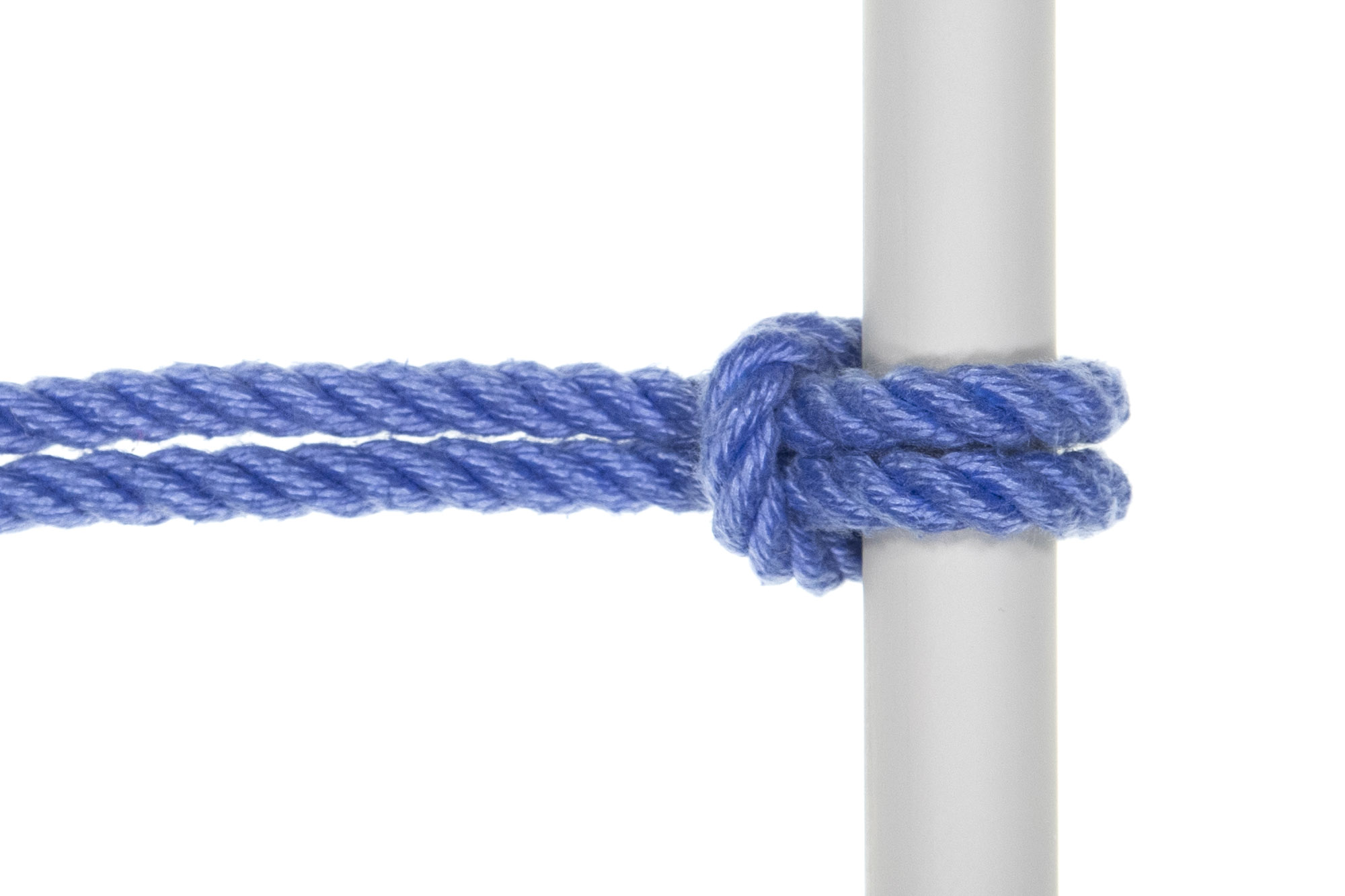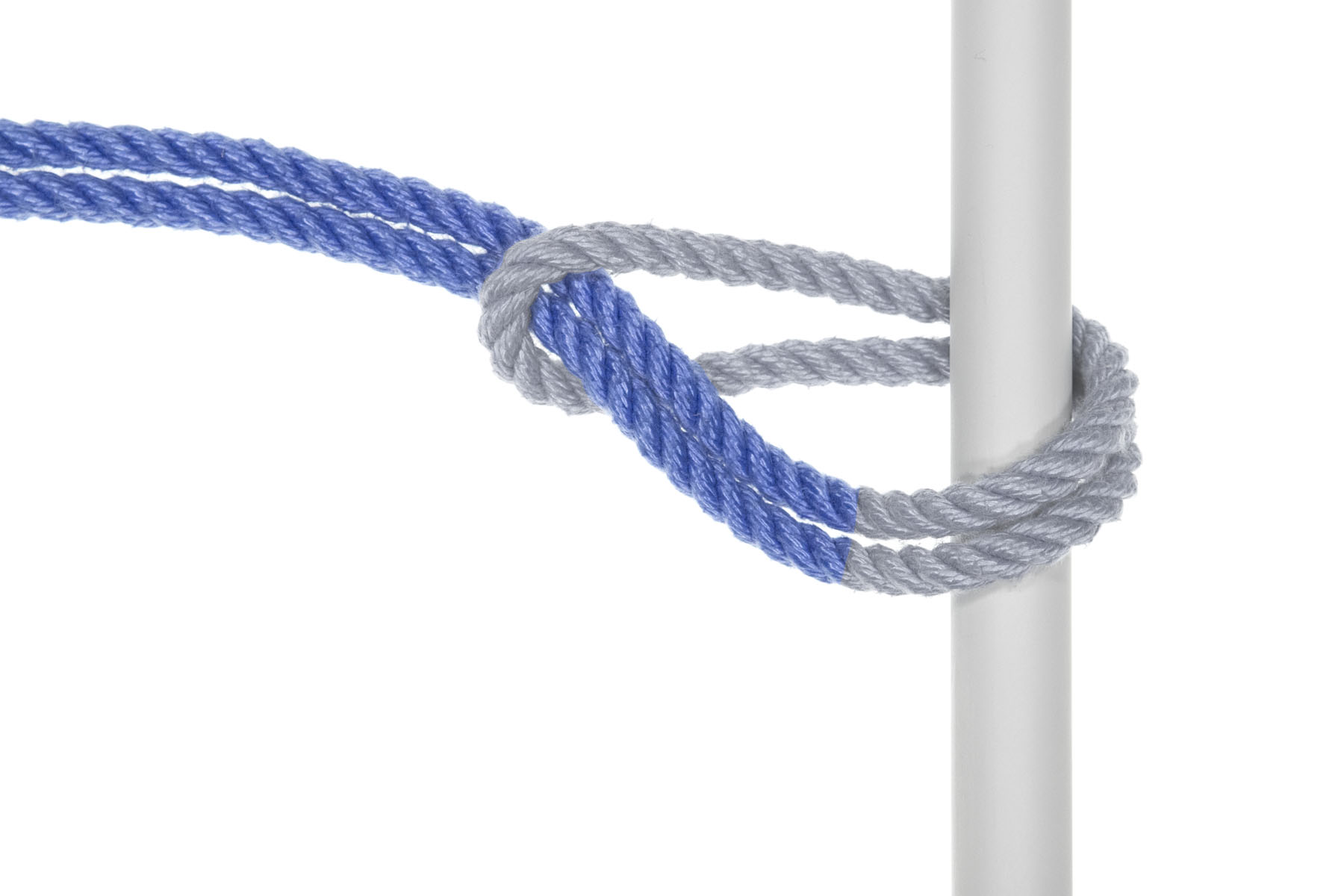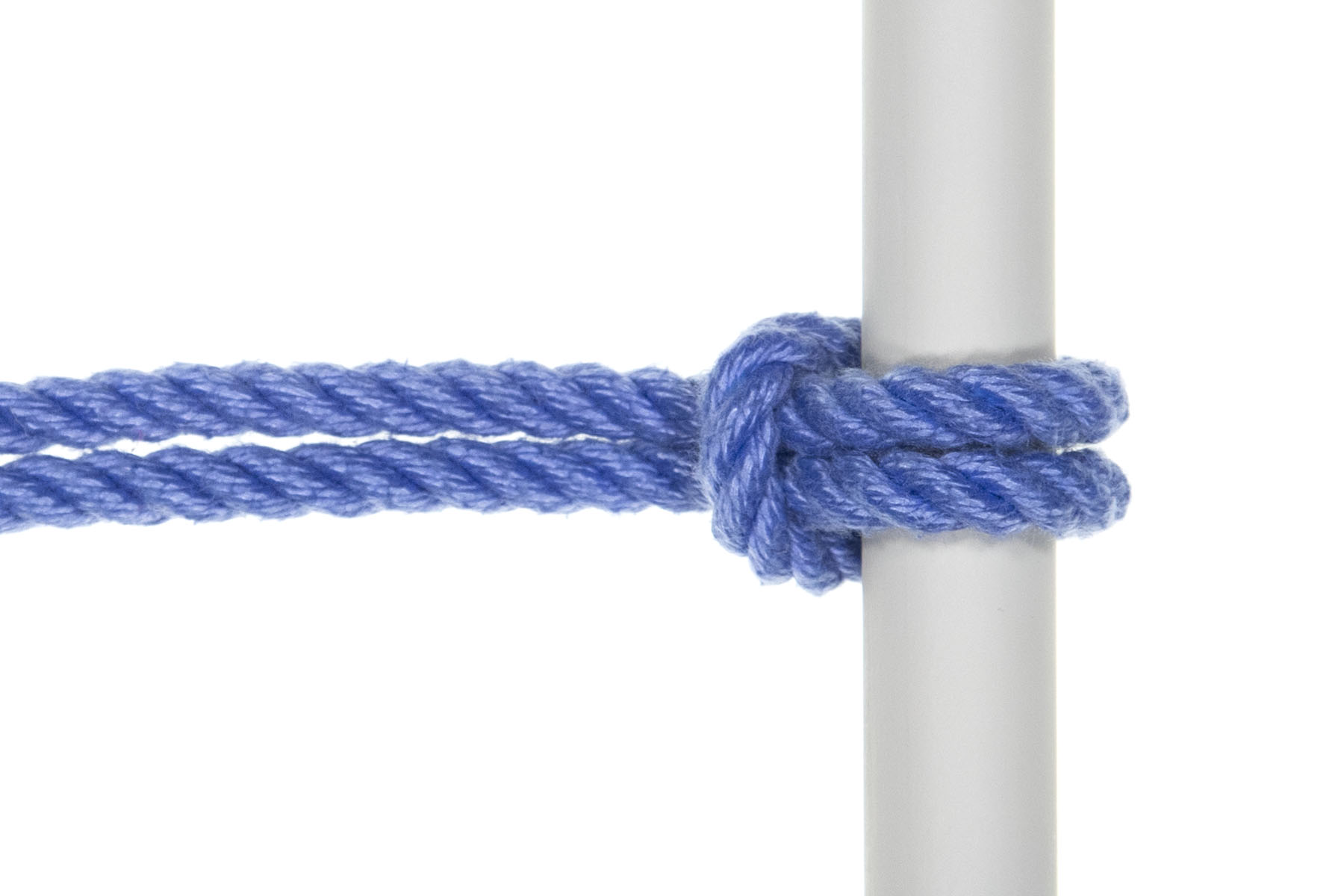Lark’s Head

The lark’s head is a simple knot that is useful on its own and as a component of many larger ties.
When to use it
The lark’s head is a great way to tie a doubled rope to a bedpost or to add a new rope to a harness.
It’s also the starting point for many reverse tension cuffs.
There are numerous clever ways to tie the lark’s head in special situations: one handed, onto a ring, onto a pole if the end is accessible, etc.
Step by step

1Pass the bight over and around the pole.

2Go through the bight.

3Snug the knot.
Notice how the lark’s head constricts when you pull on it. That makes it great for attaching to furniture or rope, but terrible for attaching directly to a person.
Notes for nerds
References and naming
This knot is ABOK # 1673 (Cow Hitch)
Ashley would like us to remind you that all true Englishmen refer to this knot as a cow hitch: the term “lark’s head” was imported from France by the dastardly Tom Bowling in 1866 (c.f. ABOK 3).
There’s a bad tendency to give the lark’s head different names depending on how it’s tied. Ashley calls it a bale sling hitch (ABOK 1694) when it’s tied in a sling, and some riggers refer to it as a cow hitch when it’s tied by threading the end.
For clarity and consistency, we always call it a lark’s head.